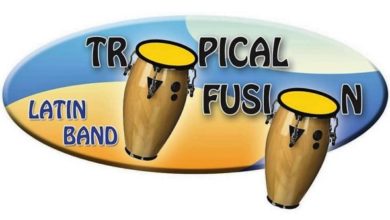Panama Viejo, Casco Antiguo, the colonial heart that united America and Spain

Panama City, Jan 19 (EFE).- The tower of the Cathedral of Our Lady of the Assumption, a 30-meter-tall former bell tower, greets tourists visiting the ruins of Panama Viejo, the first European city in the Pacific, founded in 1519, and an important commercial hub between the Old and New Worlds.
Panama Viejo and the Casco Antiguo (Spanish for Old Quarter) of Panama City were major commercial ports that connected Spain and America. Now, both sites are key components of the Colonial Transisthmian Route of Panama, which aspires to be a UNESCO World Heritage Site.
The route also includes the Caribbean Coast Fortifications of Panama: Portobelo and San Lorenzo (World Heritage since 1980 and on the List of World Heritage in Danger since 2012), and the colonial roads that connect destinations on the Pacific and the Caribbean: the Cruces and the Camino Real.
“Panama Viejo played a fundamental role in this new conception of the world; this globalized world that was born five centuries ago,” the Executive Director of the Board of Patronato Panama Viejo, Julieta de Arango, told EFE.
She explained that Panama Viejo was “the first (European) city founded on the shores of the Pacific Ocean and the mentality of that time was not only to continue with the explorations in Central America but to create a communication route with the metropolis.”
After discovering “the potential of the southern colonies (especially Peru, an important source of wealth for the colonists), the Colonial Transisthmian Route was established” and “that vertical axis” allowed for “the transshipment of goods, silver, food, and the exchange of people to the colonies and the metropolis,” she said.
“Panama Viejo was an important point for the transshipment of trade and goods (…) it received the silver that came from Peru, and the goods that arrived from Spain,” and vice versa, said De Arango.
The city, with a population of up to 10,000, was attacked by the Welsh privateer and pirate Henry Morgan in 1671. The magnitude of the attack caused the Spanish to set a huge fire that destroyed the city, according to historians.
After that, they built the current Casco Antiguo of Panama City (World Heritage since 1997) and maintained important commercial activity.
CASCO ANTIGUO OF PANAMA, THE NEW POLITICAL AND ECONOMIC CENTER
The Historic District of Panama, better known as Casco Antiguo, became the new “historical port and terminal of the route in the Pacific Ocean from 1673 when it was founded again,” said historian and director of the Center for Historical, Anthropological and Cultural Research, Marixa Lasso.
“In the aftermath of that attack, the city is rebuilt as a walled city prepared for defense. And it is a symbol of how Panamanians lived and survived the historical trauma of Henry Morgan’s invasion in 1671,” Lasso said.
The creation of the new city also moved “the Camino Real and Camino de Cruces, along with their government buildings, churches, and convents, as well as the houses of its residents,” the historian noted.
“This city has been the political center of the Route from 1673 to the present day and it was its economic center from 1673 until the middle of the 20th century when banks and businesses started leaving the old city,” she said.
The Casco Antiguo of Panama City is a colorful colonial-era historic center with a structure similar to other cities built by the Spanish in Latin America: a square with the main church as the urban epicenter.
Located on the coast of Panama Bay, its narrow streets run through low-rise buildings, contrasting with the skyscrapers of the current Panamanian capital, and Catholic churches – also respecting the architecture of the era-.
“It has great historical and heritage value, as its architectural and cultural heritage are a reflection of the centuries-old relationship between the city of Panama and its sea, as well as Panama’s place as a meeting point and confluence of cultures,” Lasso pointed out.
The Historic Quarter “also contains the history of global transportation technologies that have marked its existence, from mule roads to the railway and the Panama Canal.”
“All done on a scale necessary for an obligatory point of passage for world trade,” the historian concluded.
pbd-adl/dmt/jrh





